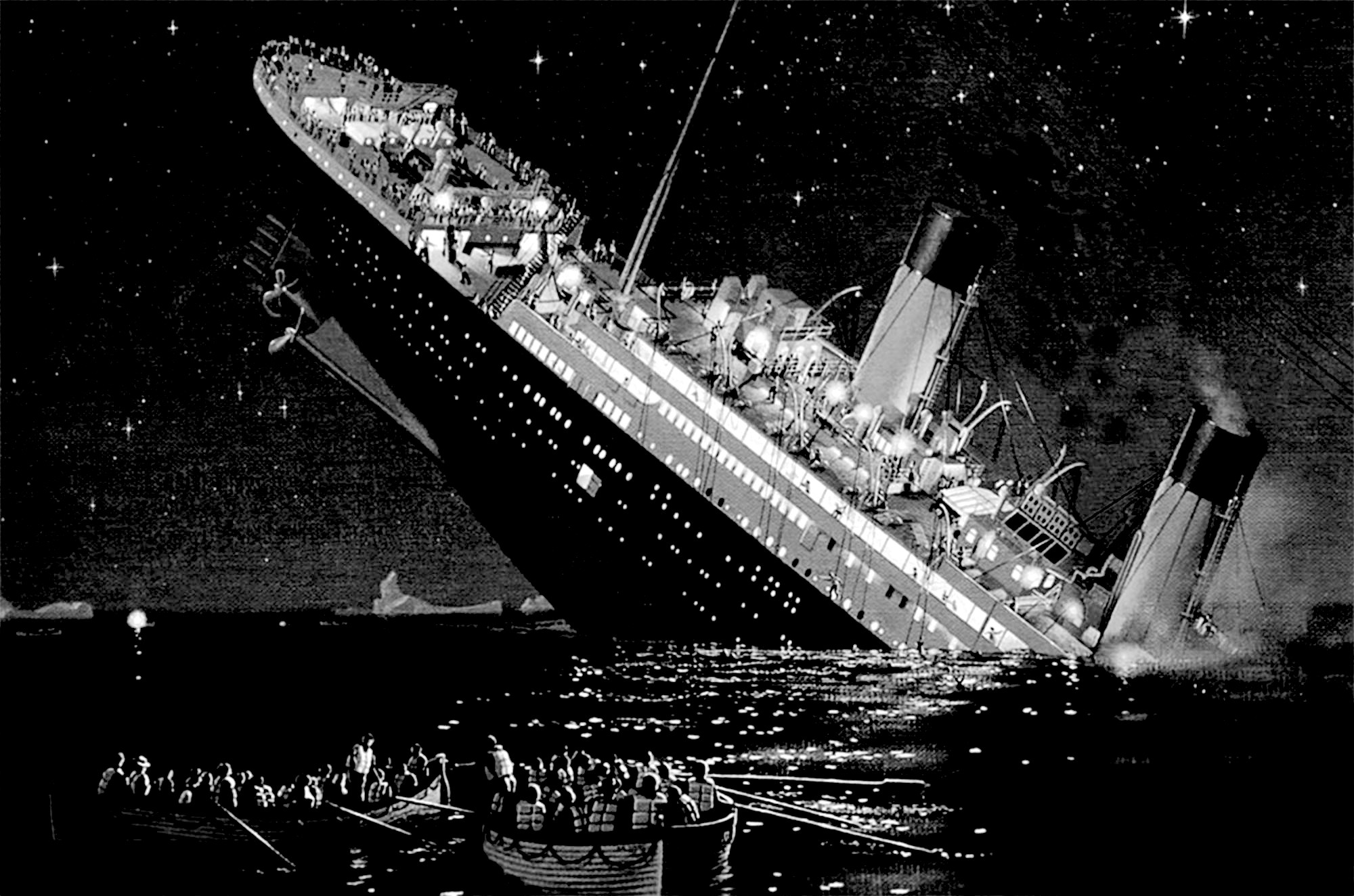The Sinking of the Titanic

Built during the hay day of passenger ship travel, the RMS Titanic was conceived by White Star Line chairman, J. Bruce Ismay and American financier JP Morgan, who controlled the White Star Lines parent corporation, the International Mercantile Marine Co.
Facing increasing competitive pressures from the Cunard Line, which recently launched the Lusitania and the Mauretania, the White Star line designed and built what they hailed as the greatest ship to ever sail the seven seas.
How Big Was The Titanic?
Built in Belfast Ireland, the Titanic was 882 feet 9 inches long with a width (“beam”) of 92 feet, 6 inches. Her total height, measured from the base of the keel to the top of the bridge, was 104 feet. She measured 46,328 gross register tons, with a draught of 34 feet 7 inches.
Captained by Edward J. Smith, the Titanic set sail on April 10, 1912, with 2224 passengers abroad. Believed by many to be the first unsinkable ship, Titanic departed Southampton for port calls at Cherbourg France and Queenstown Ireland, before heading west across the North Atlantic for New York City.
On board this most coveted and largest ship of its time, were socialite notables such as British journalist William Thomas Stead and heirs to the Straus, Astor, and Guggenheim fortunes.
When did The Titanic Sink?
Four days into the ship’s maiden voyage, the unsinkable Titanic struck an iceberg just before midnight of April 15, 1912.
How many People Died and Survived The Titanic Sinking?
Due to a shortage of lifeboats and a lack of satisfactory emergency procedures, more than 1,500 people went down in the sinking ship or froze to death in the icy North Atlantic waters.
Most of the 700 or so survivors were women and children. One hour and 20 minutes after Titanic went down, the Cunard liner Carpathia arrived. The survivors in the lifeboats were brought aboard, and a handful of others were pulled from the icy waters.
The Titanic Aftermath
It was later discovered that the Leyland liner Californian had been less than 20 miles away at the time of the accident but had failed to hear the Titanic‘s distress signals because its radio operator was off duty.
The announcement of details of the tragedy led to outrage on both sides of the Atlantic. In the disaster’s aftermath, the first International Convention for Safety of Life at Sea was held in 1913.
Rules were adopted requiring that every ship have lifeboat space for each person on board and that lifeboat drills be held. An International Ice Patrol was established to monitor icebergs in the North Atlantic shipping lanes. It was also required that ships maintain a 24-hour radio watch.
Locating the Titanic Shipwreck
On September 1, 1985, a joint U.S.-French expedition located the wreck of the Titanic lying on the ocean floor at a depth of about 13,000 feet. The ship was explored by manned and unmanned submersibles, which shed new light on the details of its sinking.
